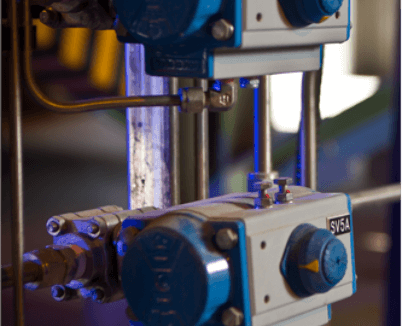FITNIR Kappa
Analizador espectroscópico NIR que mide el número kappa de pulpa kraft húmeda y seca y hojas de pulpa

Desafíos
Las fábricas de papel Kraft se basan en el índice kappa de la pulpa para estimar el grado de deslignificación del proceso de cocción. El índice kappa se utiliza como dato de entrada para el control automatizado con el fin de optimizar el rendimiento de la cocción y la calidad del producto. El método manual estándar para determinar el índice kappa utilizando permanganato de potasio es lento y tedioso y consume una gran cantidad de productos químicos. Los métodos basados en titulación semiautomatizados o automatizados reducen ligeramente el tiempo de dedicación, pero aún requieren una preparación de la muestra y un uso de productos químicos significativos. Los métodos de análisis con luz ultravioleta-visible dependen en gran medida de la composición de las especies y pueden dar lugar a errores, pero lo más importante es que no son adecuados para medir índices kappa elevados de pulpa de cartón kraft.
Solución FITNIR
FITNIR Kappa utiliza espectroscopia NIR para medir el número kappa de la pulpa kraft. Las características de absorción espectral de la lignina permiten la cuantificación directa de la lignina residual en la pulpa. En consecuencia, FITNIR Kappa no depende de otros parámetros para la medición (es decir, la concentración de los productos químicos, el peso seco preciso de la muestra, el tiempo de reacción o un cambio de color subjetivo que indique el punto final), automatiza la preparación de la muestra y elimina todos los productos químicos asociados. FITNIR Kappa proporciona el número kappa rápidamente, con excelente precisión y repetibilidad. El tiempo de análisis es inferior a 20 segundos y el tiempo total para preparar la muestra es inferior a 4 minutos. Más importante aún, los modelos de calibración se pueden transferir de grado de pulpa a grado de pulpa sin necesidad de una recalibración importante.
Propiedades medidas
FITNIR Kappa mide el número kappa de la pulpa húmeda y seca. FITNIR Kappa utiliza la espectroscopia NIR de reflectancia difusa como base de medición. La energía de la luz NIR que penetra en la muestra es absorbida por la lignina. Los sistemas ópticos recogen la luz reflejada difusa, registrando su absorción en el detector infrarrojo y generando el espectro con sus características únicas. Los datos espectrales del analizador se correlacionan luego con un modelo de calibración creado previamente para determinar el número kappa. FITNIR Kappa también se puede configurar para medir la viscosidad.
Beneficios clave

- Análisis simplificado para una mayor frecuencia de pruebas
- Reduce significativamente la variabilidad de operador a operador, mejorando la precisión y la repetibilidad.
- Elimina los productos químicos de prueba peligrosos y reduce los productos químicos de proceso hasta en $150,000 por año
- Resultados más rápidos para ajustes más rápidos, mejorando la eficiencia y la rentabilidad
- Mejora la satisfacción del cliente al adherirse a los estándares de calidad y permitir la mejora del producto.
segregación
Aspectos destacados del proyecto
Papel internacional
Corporación Domtar
Corporación Domtar
Naranja, Texas, Estados Unidos
Dryden, Ontario, Canadá
Kamloops, Columbia Británica, Canadá
Cartón Kraft para revestimiento
(2013)
Tubería de soplado y material pardo del digestor SW
(2015)
Hoja de pulpa Kappa
(2015)
FITNIR Kappa
Medición del número kappa mediante espectroscopia Nir
Mire este breve video que demuestra FITNIR Kappa y sus características clave para medir pulpa húmeda y seca, para ayudar a mejorar la eficiencia y la rentabilidad de las plantas de pulpa kraft.